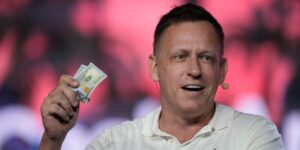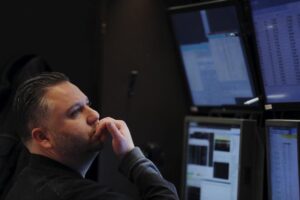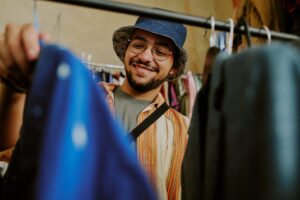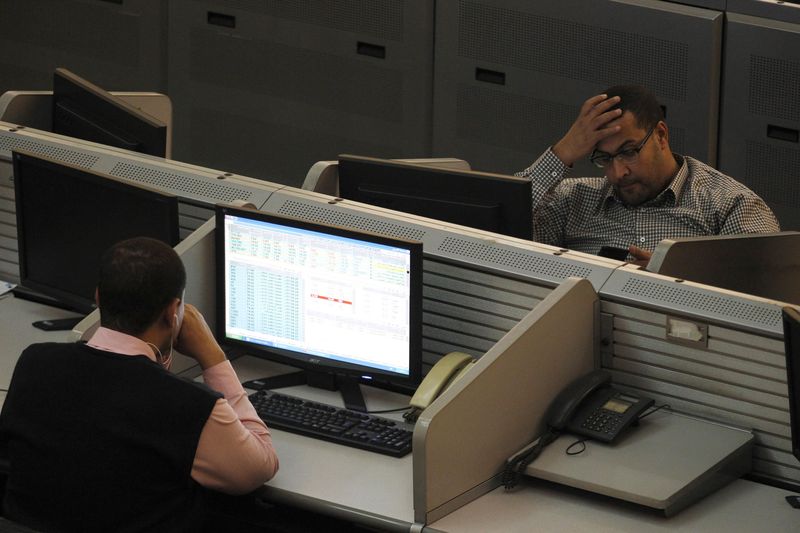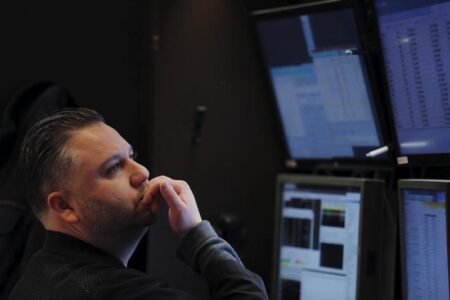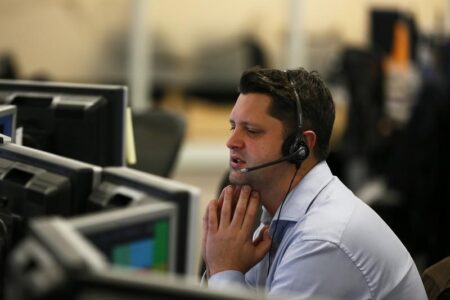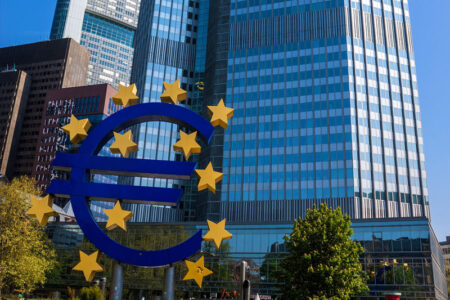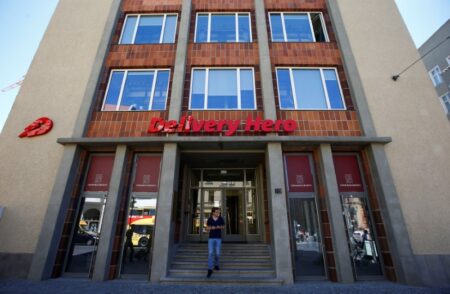Unifi, Inc. (NYSE: NYSE:), a global textile solutions provider, reported a mixed fiscal fourth quarter in 2024, with sales surpassing previous quarters and the same period last year, despite a slower recovery in the textile and apparel industry.
The company’s EBITDA stood at $5.9 million, with a focus on innovation and market share growth in North America. Unifi’s move into new product categories and its emphasis on sustainable solutions positions it for a gradual recovery in the first half of 2025 and a stronger comeback in the second half.
Key Takeaways
- Unifi’s sales for the quarter improved compared to previous quarters and year-over-year, with EBITDA reaching $5.9 million.
- The company is expanding its market share in North America and entering new categories such as home, military, automotive, and industrial applications.
- Innovative products aimed at circularity and reducing carbon footprint are expected to drive sales in 2025 and 2026.
- Unifi projects a gradual recovery in early 2025, followed by a more substantial resurgence later in the year.
- The company is managing costs and preserving cash, with a focus on reducing variable expenses and reinvesting savings into innovation and margin expansion.
Company Outlook
- Net sales for the first quarter of fiscal 2025 are expected to be between $147 million and $153 million, a 10% growth year-over-year at the midpoint.
- Adjusted EBITDA for the first quarter is projected to be between $1 million and $3 million, showing a significant improvement from the previous year.
- Capital expenditures for fiscal 2025 are estimated to be between $10 million and $12 million.
- Unifi anticipates a return to more normal conditions in fiscal 2025, with over 10% year-over-year top-line growth, positive EBITDA each quarter, and a significant increase in gross profit and margin.
Bearish Highlights
- Industry sales are recovering slower than expected, with customers cautious about inventory and cash management due to sluggish consumer trends.
- Net sales in the Americas segment were flat sequentially and down 4% year-over-year, reflecting a slowdown in consumer spending.
Bullish Highlights
- The Brazil segment saw net sales grow 9% sequentially and nearly 19% year-over-year, benefiting from price increases, full utilization, and market share gains.
- The Asia segment experienced a 21% sequential and over 17% year-over-year increase in net sales, attributed to higher sales volumes and improved market conditions.
- The company’s focus on working capital management and cost controls has resulted in better free cash flow and a stronger position for debt repayment.
Misses
- The company did not provide specific details on the revenue impact of new products and initiatives but promised to share more information in the next earnings call.
Q&A Highlights
- Unifi is investing in leadership and innovation to drive sustainable profitable growth.
- New products like white dyeable filament yarn and ThermaLoop are expected to impact fiscal 2026 positively.
- The “beyond apparel” initiative is showing progress with commercial orders and is anticipated to provide double the margin of the base business.
- Details on the revenue impact of new initiatives will be shared in the upcoming October earnings call.
Unifi’s strategic focus on diversifying its product offerings and expanding into new markets, coupled with its commitment to sustainability and innovation, suggests a proactive approach to overcoming the current industry challenges. The company remains cautiously optimistic about its future performance, with expectations of improved financial metrics in the forthcoming fiscal year.
InvestingPro Insights
Unifi, Inc.’s (NYSE: UFI) recent fiscal report indicates a company poised for a turnaround, with sales showing signs of improvement and a strategic focus on market expansion and sustainable innovation. The InvestingPro data and tips provide a deeper dive into the company’s financial health and stock performance, offering investors additional context to the reported figures.
InvestingPro Data indicates a market capitalization of $125.02 million, signaling a relatively small player in the textile industry, which may provide nimble adaptability in market trends. The revenue for the last twelve months as of Q4 2024 stood at $582.21 million, with a notable quarterly growth of 4.23%, aligning with the company’s reported sales improvements. Despite the revenue growth, the gross profit margin remains low at 2.85%, underscoring the need for Unifi to continue focusing on cost management and margin expansion.
InvestingPro Tips highlight the company’s significant debt burden and potential difficulties in making interest payments, which could be a concern for investors, especially given that Unifi does not pay dividends. However, analysts predict the company will be profitable this year, offering a glimmer of hope for future financial stability. Additionally, the stock’s one-week total return of 24.09% suggests a recent surge in investor confidence, potentially in response to the positive sales trajectory and market share gains mentioned in the article.
For those interested in a more comprehensive analysis, InvestingPro offers additional tips on Unifi, Inc., which can be found at These tips could provide investors with further insights into the company’s performance and potential investment opportunities.
Full transcript – Unifi Inc (UFI) Q4 2024:
Operator: Good morning, and thank you for attending Unifi’s Fourth Quarter Fiscal 2024 Earnings Conference Call. Today’s conference is being recorded, and all lines have been placed on mute to prevent any background noise. After the speaker’s remarks, there will be a question-and-answer session. Speakers for today’s call include Al Carey, Executive Chairman; Eddie Ingle, Chief Executive Officer; A.J. Eaker, Chief Financial Officer. And during this call, management will be referencing a webcast presentation that can be found in the Investor Relations section of unifi.com. Please familiarize yourself with Page 2 of the slide deck for cautionary statements and non-GAAP measures. And now I will turn the call over to Al Carey. Al, the floor is yours.
Al Carey: Thank you, Kathleen. Good morning, everybody, and thank you very much for joining us on the call today. I’m going to start with a brief, but broad overview of our performance for Q4 seeing a couple of insights that come out for us. And then I’m going to turn it over immediately to Eddie and A.J., who will provide you with the real details of the quarter. So the first insight was this broader textile and apparel industry sales are coming back a lot slower than we expected, but they are improving. And while the inventory to sales ratios at the retail level and for these brands are now close to the norms and at pre-COVID levels, the customers are still very cautious about building back inventories and then watching their cash and they’re keeping an eye on what I’d call a sluggish consumer trend. But retail sales for apparel and furnishings for the first half of the year were growing at about low single-digits. And if you factor in inflation, they’re probably flat to slightly down versus a year ago. Our sales for the quarter — for this fourth quarter are better than the previous quarters of 2024 and they’re better than last year’s Q4. Our EBITDA was $5.9 million and it’s substantially better than the last three quarters and better performances attributed mostly to these quarter two and quarter three cost reductions that, that we told you about last time. So most of those cost reductions are now fully in place. Now the second insight to the quarter was we are seeing improved market share in North America despite the sluggish sales come back. And we’re very close to booking sales in the new categories that we’ve told you about before, which are the beyond apparel categories. And those categories include home, military, automotive and industrial applications. And these sales will start to offset the low performance of apparel. And also, they’ll give us improved mix as the margins on these products are good bit better than the base apparel sales that we have. And the third insight is that we’ve been working on innovation all through this period, and we now have introduced to the marketplace just this week. Our Textile Takeback introduction, our new revolutionary insulation products and additional layering of our REPREVE platform. And these products have been under development for several quarters, and they’re going to generate sales in calendar 2025. We won’t see any of that in the next couple of months, but they will begin in 2025 and in 2026. And two of these products are very interesting, in particular, the ones that address the customer demand around circularity and also around reducing carbon footprint. So if I had to say how we feel about the first half of 2025. It will show improvement versus prior year, but it will be a gradual slower comeback than the second half should show a more dramatic comeback. And I’d say we’re feeling cautiously optimistic as we look out over the new fiscal year, and we really believe that soon enough, these customers that we have are going to have to start replenishing their inventories, and they’re also going to have to start preparing for the spring selling season. And I believe those inventories right now are quite low, and they’re below pre-COVID levels. So we’re going to continue to manage costs very tightly during this period. We’re going to preserve cash until all this opens back up. And I think when it’s all over, we’ll be a better company than we were before all of this. So let me turn it over right now to Eddie Ingle, our CEO, and he’ll take you through more the important details of the quarter. Eddie?
Eddie Ingle: Thanks, Al. And as Al just highlighted, we do believe that in most aspects of our business, Unifi has finally begun to turn a corner and the operating environment is beginning to get closer to returning to more normal levels. And over the past year plus, we’ve been working hard to reposition our business so to be able to respond quickly to an uptick in customer demands and that the results of those efforts have already become apparent in our financials this quarter as we saw solid year-over-year revenue and volume growth and a significant improvement in our margins. We are also continuing to see strong momentum across our segments, and we recently announced some exciting new product innovations, which I will touch on in greater detail shortly. Turning now to Slide 4 for an overview of the quarter. During the fourth quarter of fiscal 2024, we reported $157.5 million in consolidated net sales, which was up 4% year-over-year and 6% sequentially compared to the third quarter. This improvement in net sales was largely driven by our Brazil segment, which has been performing very well recently. In addition, our operations in China have also been continuing to build momentum and contributed to our strong performance during the quarter. We are continuing to see the benefits of our Americas cost reset efforts, which is evident by the significant improvement in our gross margin and subdued operating expenses. We expect to see these efforts continue through the next few quarters as well although it’s worth noting that some of these savings will be slightly offset by inflation. With that said, we still believe we have driven sustainable efficiencies and cost discipline over the last year that our organization will continue to leverage into the future. Our sales transformation has also been progressing well, and we have continued to see the benefits of our transformation efforts with gross profit during the quarter, experiencing a $6 million improvement on a sequential basis. This gives us confidence that our operating profit can continue to improve during fiscal 2025. I’ll now provide a brief update on each of our business segments. In the Americas segment, while we are continuing to take market share, we did experience a bit of a slowdown due to some competitive shuffling and some customers pushing out orders for a few months, but we remain well positioned to take advantage of further improvement in the region as our continued efforts on beyond apparel initiatives are helping to offset the weakness in apparel programs. Our Brazil segment, as mentioned earlier, was our strongest performing segment during the fourth quarter. The strong performance was driven by our ability to take price in the region operate at full utilization, and we have continued to benefit from the capture of additional market share following our main competitor to exit the region. In our Asia segment, we are continuing to see signs of recovery, and we believe that we’ll see stronger performance in the region during fiscal 2025 despite a seasonally slower first quarter. Turning now to Slide 5 for an update on REPREVE. During the fourth quarter, REPREVE represented 34% of sales, a meaningful increase when compared to the previous quarter. This improvement in sales was largely driven by the positive recovery trends that have been seen in Central America as well as a moderate recovery in Asia. Looking ahead, we continue to believe that we will see additional improvements in our REPREVE Fiber business as we progress through fiscal 2025. This part of our business will be aided by the revenues we expect to see in calendar 2025 as we begin to see commercial activity mainly through our recent innovation efforts from some new REPREVE product launches. On the marketing front for REPREVE, we also achieved several exciting co-branding [phases] (ph) this quarter, notably with Dolce Vita footwear part of the Steve Madden Group incorporated REPREVE into its products, Kate Spade featured REPREVE in a pajama line for Costco (NASDAQ:) Canada and Teva launched an iconic version of their original universal sandal in a [indiscernible] version, which contained REPREVE powered by our own Textile Takeback program. Now, as many of you are aware, if you’ve listened to our calls over the last few quarters, our Textile Takeback program aims to increase circularity in the production of textiles by transforming fabric waste into our recycled resin that in turn is converted into a pre-fiber. Through this process, we are not only leading the transition for a more circular supply chain, but we are also helping our customers, such as the ones I mentioned earlier, meet their sustainability goals. Now staying on the topic of Textile Takeback, I would like to spend some time reviewing some of the new innovative REPREVE products that we just announced earlier this week that are harnessing our Textile Takeback program and already have the ability to be offered at scale. First, on Slide 6, you’ll see some highlights of our new white REPREVE filament yarn powered by our Textile Takeback process that we will be showcasing at the Intertextile Shanghai Apparel Fabrics convention next week. The new form of REPREVE filament yarn is made of 50% Textile Takeback waste and 50% recycled bottles, which is the world’s first 50% textile waste filament yarn with the tracer and U-TRUST verification. The new offering is white, dyeable and available at scale now. On Slide 7, for our second new product announcements, you can see that we’ve launched a totally new product offering, but still based on polyester fiber called ThermaLoop, which is an insulation solution that is designed for home goods, outdoor gear applications, things like sleeping bags and apparel such as winter jackets. What makes ThermaLoop so unique is that 50% of the fiber is used to make it are from textile waste, and we are launching this new product offering in black. The ThermaLoop products were launched as 100% recycled content. What is even more exciting is that the ThermaLoop padding product is the first of its kind to have a REPREVE recycled polyester low-melt fiber, which allows our customers to provide a wider range of sustainable offerings. Both ThermaLoop and our new form of pre-filament yarn will be sampled by our customers throughout fiscal 2025. We believe we will begin to see some revenues and volume benefits from our new filament yarn in the second half of fiscal 2025. And we’ll begin to see the growth benefits from the ThermaLoop throughout fiscal 2026 supporting additional growth moving forward. Before I wrap up, I would also like to note that our beyond apparel innovations are continuing to grow and with conversations progressing with a number of customers in key end markets. And we are hopeful that we’ll be able to further discuss these in the near future. With that, I will now like to pass the call over to A.J. to discuss our financial results for the quarter.
A.J. Eaker: Thank you, Eddie. As both Al and Eddie noted, we’ve continued to make great strides towards improving our business, and we are well positioned to pivot to growth and stronger profitability as we move forward. Our focus has remained on keeping our variable expenses across both production and administrative functions low, and we’ve already begun to see a sustainable reduction in those expenses. As we’ve previously noted, we plan to reinvest these cost savings and increase profits in the key areas of our business that will drive innovation and margin expansion, such as the two new REPREVE fiber products that Eddie just discussed. Turning now to our financial results. On Slide 8, you’ll see our consolidated financial highlights for the quarter. Consolidated net sales for the quarter were $157.5 million, up 6% sequentially versus the third quarter or 4% year-over-year, driven by our beneficial pricing actions, continued market share gains and some demand normalization in conjunction with improvements from our profitability improvement plan continuing to materialize. This greater performance also led to our gross profit seeing an improvement of more than 100% sequentially, marking our third consecutive quarter of gross profit improvement. Turning to Slide 9. In the Americas segment, net sales were sequentially flat and down 4% year-over-year. which, as Eddie noted, was primarily driven by a slowdown in spending and customers pushing out a few orders. However, with that said, the Americas segment did experience a significant gross profit improvement which was driven by improved productivity in the region following holiday impacts in the third quarter of fiscal ’24. Slide 10 displays our Brazil segment highlights, which experienced net sales growth of 9% during the quarter on a sequential basis and almost 19% year-over-year. Our Brazil segment has continued to benefit from our ability to take price in the region, operate at full utilization and the capture of additional market share. On Slide 11, the Asia segment saw net sales growth of 21% sequentially and over 17% year-over-year, driven by higher sales volumes in the period and improved market conditions. As Asia continues to recover, we remain well positioned in the region, and our portfolio expansion will help drive improved performance for the segment in the future. Before passing the call back to Eddie for some closing commentary, I’ll now briefly discuss our balance sheet on Slide 12. During the quarter, we continued to focus on working capital management and cost controls, allowing for a better free cash flow situation in the quarter and year-to-date periods and positioning us to remain focused on debt repayment. CapEx spend continues to be focused on maintenance levels and remain significantly lower than the prior two fiscal years with fiscal 2024 coming in at $11 million, a multiyear low attributed to the diligence of our various teams and operations. With our improved financial performance and our focus on managing our balance sheet, we remain confident that our business is well positioned for realizing profitable growth opportunities in fiscal ’25 and beyond. I’ll now pass the call back to Eddie to take us through the last few slides of the presentation and make some final comments.
Eddie Ingle: Thank you, A.J. Let’s now turn to Slide 13 to discuss our forecast for the first quarter of fiscal 2025. As we look forward, we’re having more positive conversations with our customers about their needs and destocking is clearly behind us and most of the industry, which will help as we anniversary some of the impacts of this unusual period. And looking specifically at the first quarter, we expect to see our positive momentum push forward as we begin our new fiscal year. More specifically for the quarter, the first quarter, which, as a reminder, is historically one of our slower quarters from a sales perspective due to seasonality, we are expecting the following, net sales between $147 million and $153 million, which at the midpoint would be roughly a 10% top line growth year-over-year. We expect adjusted EBITDA to range between $1 million and $3 million, a significant improvement over last year’s EBITDA loss. And we also expect to continue to keep a disciplined eye on capital expenditures and believe CapEx for the quarter will come in between $3 million and $4 million. Then in terms of our fiscal ’25 outlook, I’d like to provide a little more context on Slide 14. Our underlying momentum is rebuilding. So in fiscal 2025, we believe we’ll see a return to more normal conditions, which will support top line growth in excess of 10% year-over-year. Further, we believe the proactive decisions we have made to control our costs and streamline our business will continue to show up in stronger profitability results next year. We expect EBITDA to be positive in every quarter of the fiscal year and see a path to a significant increase in gross profit, gross margin and adjusted EBITDA. Lastly, we’ve budgeted to keep capital expenditures contained, and we are projecting that we’ll see capital expenditures range from $10 million to $12 million for fiscal 2025. Moving on to Slide 15. You can see that some of the key strategic initiative items we’re focused on to maintain our momentum and expand our business. While we’re excited about our opportunities in fiscal 2025, I want to be clear that we’re focused on pivoting to growth for the foreseeable future. Despite the challenging conditions over the last 1.5 years, we’ve never stopped investing in our business. We put new leaders in key areas to invigorate and position the business for sustainable profitable growth. We also invested heavily in innovation as we talked about today, as this is the engine that helps us grow our business globally. It is our belief that we have only scratched the surface of our potential as demand for sustainable solutions continues to be desired by our customers’ customers. Our REPREVE offerings continue to gain traction in terms of name recognition and assortment and our beyond apparel initiatives will help us further diversify our product portfolio by offering new avenues for innovation and growth. Finally, we have just started to leverage our Textile Takeback process at scale with ThermaLoop and our new REPREVE filament yarn powered by Textile Takeback. And we have a pipeline of future Textile Takeback innovation opportunities that we will share with you over the next several quarters and years. And before I end our remarks, I want to note, collectively, we’ve been through a lot over the last few years. And this team — the global team has risen to the challenge to not only help streamline our business, but also set it up for long-term success. And I want to personally thank the whole team again for all of their hard work. With that, we would now like to open the line for questions. Thank you. Operator?
Operator: [Operator Instructions] And you first question comes from the line of Anthony Lebiedzinski. Your line is now open.
Anthony Lebiedzinski: Hi, good morning, and thank you for taking the questions. So certainly nice to see the improvement in sales and profitability during the quarter. As you pointed out, Brazil showed the most improvement from a top and bottom line perspective. Just wondering what is your confidence level as far as being able to sustain that type of improvement going forward?
Eddie Ingle: Specifically in Brazil, we actually feel very confident in the demand signals we’re getting. We expect to run full throughout the fiscal year. There will be some margin pressure as the raw materials inputs normalize and our margin is going to catch up with the new higher input costs. But for the most part, we do expect to remain strong and have much better [indiscernible] performance in Brazil this year versus last year.
Anthony Lebiedzinski: That’s great to hear. And just a follow-up as far as the raw material costs. Are you seeing that in all regions? Or is this specifically to Brazil that you referenced to?
Eddie Ingle: It’s specifically in Brazil due to the supply chain that we have. Most of the inputs come from Asia and the freight cost international container costs have risen significantly, which has given us a pricing opportunity.
Anthony Lebiedzinski: Understood. Okay. And then as far as — in other regions, what are you seeing from a cost perspective of raw materials?
Eddie Ingle: Raw materials have been predominantly for the most part, flat.
Anthony Lebiedzinski: Got you. That’s good to hear. Okay. And then — so in your conversations with your top customers in the Americas, obviously, your largest region, what are you hearing from them as far as when we could see improved results?
Eddie Ingle: When you look across our top customers in all regions actually, not just the apparel segment, they are telegraphing to us that our fiscal Q1, the July through September period is going to be a little slower than they had expected, but they are, I think, almost all of them are expecting an uptick in October. We have seen a significant improvement already in Central America, our business down there and maybe they’re a leading indicator, but we do expect to see that business improve actually as to move the next — through the next few months. In the US, specifically, there are some markets that we sell into that traditionally, they are slower in the summer. And as we move into the late September, early October period, things will get back to a more normalized higher run rate. But they’re — generally speaking, positive, it’s very different from what it was this time last year.
Anthony Lebiedzinski: Got you. Okay. So it sounds just like normal seasonality as far as what’s impacting that, okay? Okay. And then in terms of the new product offerings that you announced earlier this week with the white dyeable filament yarn and ThermaLoop, just wondering how meaningful could these new products be? I know you talked about really calendar ’25 as far as seeing a benefit, but just wondering if you could — if there’s any way you could put a number or just give more details as to what’s the opportunity for those new products?
Eddie Ingle: Well, I personally, I’m incredibly excited about what we’ve been able to bring to the markets. We’ve been asked for several years now, how do we make the supply chain more circular. And on top of that, there is pending legislation in the EU that will require inputs to recycled inputs content to be not just from bottles, but also from textile. So we believe we’ve hit the right note with a 50% content of Textile Takeback, but 100% recycled. We believe based on the messaging we’ve been getting from the brands that we are right on the sweet spots for them to be able to communicate. I’ve actually spent time personally talking to brands in Europe and in the US. And from — based on their reaction and the reaction is different depending on the brand, but based on the some reactions of all these brands and retailers, we think we’ve hit on a nice balance of circularity and sustainability. Because some customers are based on our focus on carbon reduction. Some customers are based on fossil fuel consumption depletion, and this provides the answers to both. And I think what’s really exciting, Anthony, is the fact that one of these products is a new product line for us, insulation and it allows us to call directly on the brands and we can get spec-ed in as a solution for providing a recycled content product.
Anthony Lebiedzinski: Got you. Yeah. That sounds very good. So as far as — I know it’s hard to say for sure, probably as far as the timing of this pending legislation. But I mean, as far as what you know, what’s the earliest that you think that you could actually see that going through because I think that, that could be meaningful to you guys?
Eddie Ingle: I think in the second half of this fiscal year, the January through July period, we’ll start to see — we’ll be sampling now, but we’ll start to see meaningful production orders and really at the beginning of our fiscal 2026, 12 months from now, 10 months from now, it will be in our budget, and it will be visible from a revenue perspective and margin perspective. But we are planning for the next six months to fulfill the sampling needs of all the customers, so they can figure out how and when to put it into their programs.
Anthony Lebiedzinski: Got you. Good. Okay. And then as far as the beyond apparel initiative, I know that’s something you guys have talked about certainly in the past. As far as thinking about this going forward here, are you actually gaining some new customers? Are you actually seeing more purchase orders to come in? And maybe if you could just provide a little bit more detail on the apparel initiative. That would be helpful.
Eddie Ingle: Yeah. It’s — we have talked about beyond apparel a lot in our calls really the last 12 to 18 months. We are seeing traction. We are seeing commercial orders. And I believe by the — in the next call, we’ll be able to outline some of the revenue impacts that we’re going to see from these initiatives. Right now, I can’t give specific details, but I’m very confident that by — in the October call, we’ll be able to outline the progress we’ve made and what that means to our business, but we are well on our way to making it part of our business. Thanks.
Al Carey: This is Al. I just wanted to add something to the Eddie’s comments. I’d say that in fiscal 2026, we’ll see an impact and probably a little bit in the end of this fiscal year. But the thing that’s exciting is the products that Eddie is talking about, the new ones with Textile Takeback and the insulation, they have stronger — significantly stronger margins than our base business. And then if you go to the beyond apparel, I know we’ve been talking about it for a long time, but one of the new pieces of information is to get qualified for some of these customers, boy, it takes a long time for qualifying the quality of your product, the timing and to get contracts signed. But those are happening. And that’s another one that has significantly better gross profit margins than the base business that we’re into today. So I think going forward, we’ll be less dependent. We’re still going to sell a — want to be in the apparel business, but will be less dependent on it. And this new Textile Takeback is a real boost in the environmental sustainability story. So I wish these were going to show up this quarter. They won’t, but they will be probably the end of the fiscal year.
Anthony Lebiedzinski: Okay. That’s great to hear, and I appreciate the comprehensive answer. So I guess my last question, just a follow-up, as far as the margin differential, any way you guys could quantify or give some more additional color as far as what the margin difference you think will be for the new products versus the legacy products?
A.J. Eaker: Sure, Anthony, it’s A.J. Thanks for the questions, and thanks for joining this morning. In general, we’re seeing that as, in general, double what we see from our base business. Certainly, the base business is constrained, especially in the Americas right now with fixed cost absorption and not getting the full volumes in that we’ve been chasing for several months now. So those margins are naturally suppressed. But you’ve seen those in the past in the low double digits, somewhere between 8%, 12%, 15% that we’ve been able to perform in the better years. So with these new products as they have some innovation underlying those and we’re able to really key in on what customers need with the new products, we’re able to see double the margin there in many cases.
Anthony Lebiedzinski: All right. Well, that’s great to hear and I look forward to seeing the progress that you guys will be making this year. So, thank you very much, and best of luck.
Al Carey: Thank you.
A.J. Eaker: Excellent. Thank you, Anthony.
Operator: [Operator Instructions] And that concludes our Q&A session and today’s call. Thank you, everyone, for joining. You may now disconnect.
This article was generated with the support of AI and reviewed by an editor. For more information see our T&C.
Read the full article here



